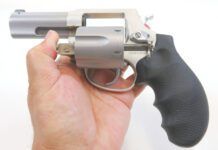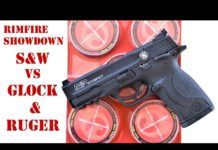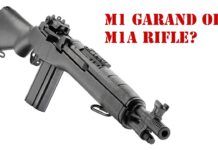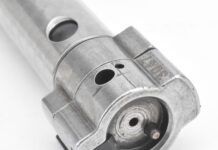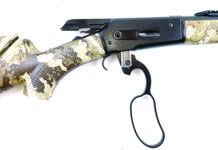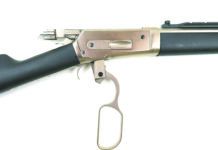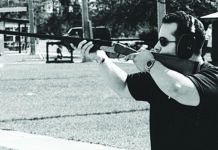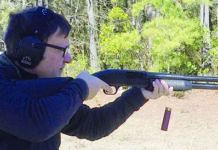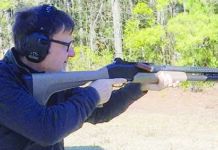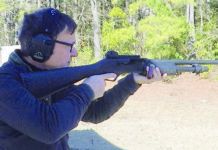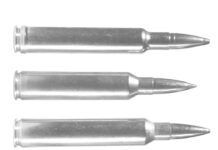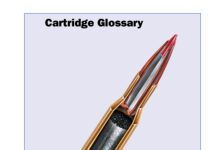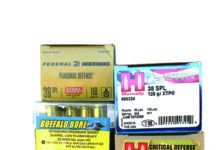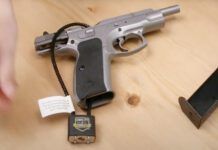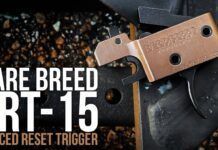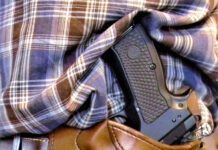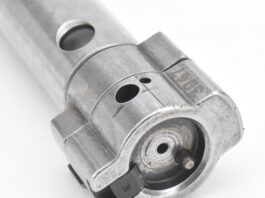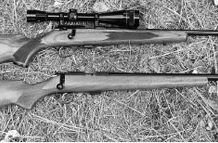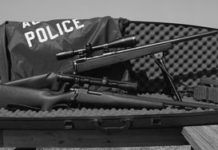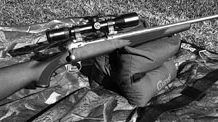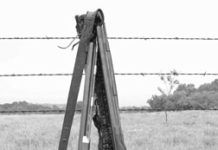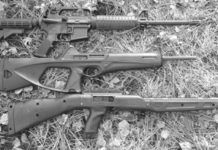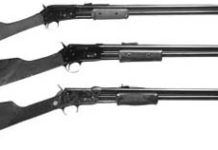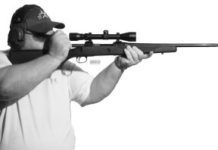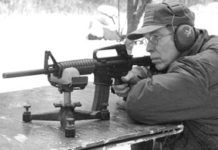Medium-Price .22 Bolt Rifles: We Pick CZ Over Remington
9mm AR-Style Carbines: RockRiver, Bushmaster, and Olympic
Short-Barreled Tactical Rifles: Remington Noses Out Savage
The 1960s were a trying time for law enforcement in America. Radical anti-government groups were popping up, and drug use began its long-term intrusion into everyday life. Shoot-outs with police were becoming more common. Criminals were starting to take more hostages during the commission of crimes. It became clear to law-enforcement leaders that they needed officers with specialized training for these situations. The days of using military surplus weapons, .38 revolvers and shotguns had changed.
Chief Daryl F. Gates of the Los Angeles Police department has been credited with starting the first SWAT (Special Weapons and Tactics) team in 1967. It was composed of sixty of the department's best marksmen. Now most large departments have a well-trained SWAT Unit that is capable on being called into action 24 hours a day. To supplement SWAT and to secure crime scenes until SWAT can arrive, ERTs (Early Response Teams) have been developed in the ranks of the regular patrol officers. This is where there is a great need for less expensive and easily transported tactical rifles, such as those with 20-inch barrels.
Why a short-barreled rifle, you ask? In urban situations a short-barreled rifle is easier to handle in close quarters. Since the size of today's police cars are shrinking, a short-barrel rifle is much easier to carry in the trunk or even in the front seat. Departments need trained officers with rifles capable of sub-MOA accuracy. For the civilian, these rifles are handy, easy to carry, fun to shoot, and make great hunting rifles.
We recently tested two guns that fit in this class: Remington's Model 700 LTR (Light Tactical Rifle) .308 No. 5739, which usually sells for about $850, and the Savage 10FP .308, $621.
High-End Rimfires: We Narrowly Pick Anschutz Over Kimber
A well-made rimfire rifle will make other shooters at the range stop, stare, and sometimes drool. Some people might buy them simply to admire their beauty or impress onlookers, but we believe that no matter how good a gun looks, if it doesn't perform, it isn't worth our consideration.
We recently tested two models that fit, or perhaps define, the high-end rimfire sporter market: The Anschutz 1710 D KL Monte Carlo No. 220.2030, $1413; and the $1877 Kimber SuperAmerica. When other shooters saw these rifles at the range, they usually stopped and asked, "What kind of rifles are thooose!"
To find out if these guns shot as well as they looked, we enlisted a panel of testers that included seven teenagers (four male and three female) and three adult males. The teenagers' experience varied from first-time shooter to four years of hunting and target shooting. The adult males all had over 25 years of shooting experience of all kinds. One of the adults commented that these rifles were "too good for teenagers to shoot."
270 WSM Bolt-Action Rifles: We Would Buy Savages 16FSS
According to Winchester, the main values of its Short Magnum (WSM) cartridges are that when compared to conventional, long-action calibers, the 270 WSM, 7mm WSM and 300 WSM exceed the ballistics of the 270 Win., 7mm Rem. Mag. and 300 Win. Mag. respectively. Also, WSM rifles achieve these improved ballistics in short-action configurations which purportedly are lighter and faster handling than their long-action counterparts.
We've tested several of the fat-but-fast WSM and WSSM cartridges over the years, usually comparing them to their closest standard-action competitor. As you might expect, sometimes we liked the WSM/WSSM guns better than standard chamberings, and sometimes we didn't.
This time around we wanted to set aside the multiple-cartridge matchups and put three similar 270 Winchester Short Magnums to the test. Toward that end, we acquired three rifles, each measuring about 43 inches in length and weighing about 7 pounds. Our test subjects were the Savage Arms 16FSS No. 17425, $569; a Browning A-Bolt II Composite Stalker No. 035012248, $734; and the Ruger KM77RFP MK II No. 17839, $695.
.50-Caliber Muzzleloaders: The T/C Hawken Beats Lymans GP
Nearly every state in the union has a special blackpowder hunting season. Such seasons, some of which are exclusive bp-only hunting periods, entice a lot of hunters to try their hand at muzzle loading. Some states specify that the rifles used must be side locks and shoot round balls. Other states allow in-line rifles that shoot sabots and often come with scopes. Each hunter has to decide for himself how he wants to limit himself. A round-ball shooter is limited to 100-yard shots, but a sabot shooter can reach out to 200 or even 250 yards. Also, a round-ball shooter, also known as a traditional-style shooter, carries a rifle similar to those our forefathers carried more than two centuries ago. Carrying a rifle like that lets the modern-day hunter relive history, and actually taking game with such a rifle is a real test of his hunting skills.
The two leading traditional-style rifles being sold today are the Lyman Great Plains, $435, and the Thompson Center Hawken, $550. Designed after rifles of the late 1800s, these .50-caliber rifles are well made, accurate, and would both perform well in the woods on a deer hunt or a fun day at the range. But we wondered if one model would be a better buy than the other, so we put them through a head-to-head evaluation at a private range outside of Lampasas, Texas.
.40 S&W Carbines: We Shoot Hi-Point, Beretta, Olympic Arms
A handgun is many times more difficult to learn to shoot well than a rifle, but there are times when a rifle cartridge is too powerful for the task at hand, whether it's punching holes in old tin cans or defending your home. The solution is one about as old as cartridge firearms, a short rifle that shoots handgun cartridges. A pistol-caliber carbine makes hits easier, and often gives away very little practical usefulness or stopping power to a full-size rifle cartridge. There too is the advantage of multiple firearms taking the same cartridge, so ammunition supply is simplified.
With the steady or even increasing popularity of the .40 S&W cartridge, it seemed to us it was time to see what's available in .40 S&W carbines. To that end, we acquired three, Hi-Point's Model 4095 ($225), the compact, polymerized Beretta Cx4 Storm ($800), and Olympic Arms' K40 with its collapsible stock ($834), and put them through our paces. As with pistols, we tried them for fast bursts of two shots, and also from the bench at 50 yards. We tested with Cor-Bon 140-grain DPX JHP, with Remington 155-grain JHP, and with Speer 180-grain GoldDot HP. We also tried several other types of ammo, but didn't record all the results. This is what we found.
Rimfire Carbines: Rugers Handy 10/22CRR Is Our First Choice
In September 2005, Sturm Ruger announced production of a compact version of its prolific 10/22 semi-automatic rifle, $275. Christened the 10/22CRR, we ordered one immediately. When it arrived, our first impression was that this carbine was not merely shorter; it, in fact, seemed scaled down from the original design.
We couldn't help but smile at the compact 10/22's size, but the real fun began when we went shopping for additional rimfire semi-automatic carbines to fill out a test roster. We acquired a Marlin 70PSS with composite stock, $318. The Marlin carbine differed from the Ruger in several ways, not the least of which was that it can be broken down by removing the barrel for transport. Marlin refers to this model as the Papoose. Our third gun was the Armscor AK 22, $220. The AK22 closely resembles an AK47, down to the replica magazine.
All three guns arrived with a single magazine. Further, each carbine could be viewed as a youth model, a training device, or both. But would the reduction of size compromise the time-proven 10/22 design? Would the Armscor AK22's big-gun appearance interfere with function or reliability? Would the integrity of lockup between barrel and receiver of the Marlin show signs of failure after repeated applications? Could three conceptually different models produce the same level of accuracy?
To find out, we shot the guns at 50 yards using a Caldwell Tack Driver ($33 unfilled from
Here's what we found when we tested the guns head to head:
Messy Old Mausers: Good Deals For the Knowledgeable Buyer?
The Mauser 98, in most of its many variants, is one of the finest rifle actions ever developed, and one of the most long-lived. Today, we see that Remington has just announced its own version of the old German design in a "new" rifle. But you can still occasionally find inexpensive variants of the old M98 war-horse in original versions, as issued to troops in countries all over the world, offered for sale by some of the major importers, and that's how we got our three test rifles. Southern Ohio Gun (SOG) had a sale, and we acquired three slightly different M98s for evaluation. Before we saw these rifles, we thought any of them would provide at least a decent action for a custom rifle, always with the understanding that custom rifles will almost certainly cost way more than just going out and buying a Ruger or Remington. But some folks are happy to spend lots of money for a personalized, one-off rifle, and the M98 is one of the best actions to use for such a project. One of our just-bought actions — the German one — was badly deformed on the forward part of its front ring, removing it from any reasonable consideration for use on a custom rifle. The other two could be made into custom rifles, but that's not necessary, because any decent older 98 ought to be a good long-term investment, and should provide lots of shooting fun along the way. Do these 98s have any value, other than for collectors?
We bought three M98 variants from SOG, all 8mm rifles. They were a German K98 (SLG-K98 SB, $140), a Yugoslav Mauser M24/47 (SLG-M24/47, $110), and a Model 1903/38 (SLG-T03, $90). All fell into the class of Curios & Relics. Each rifle was tagged with a notice that stated the guns had not been inspected by a gunsmith, so there was no obvious guarantee we had three viable rifles. In fact, they all were thickly coated with cosmoline when they arrived, so we actually had no idea what was there. Were they worth their price, or just a total waste of money? Let's take a look.
Taurus, AWA, and Beretta Rifles Meet at the Not-Quite-OK Corral
There's a new breed of action rifle in Cowtown. Instead of the diehard lever gun of old, many Cowboy Action shooters looking to shave the last seconds off their time will soon be using a pump rifle. In the quest for speed in that game, top shooters are posting winning scores with the old Colt Lightning design, or clones thereof. Because top shooters use them, that means everybody wants one, whether or not they work better than the ol' lever action mainstay. Variety is, of course, what drives the gun industry, and we're surely not complaining, but we confess we had no idea how well these corn-shuckers would perform. The original Colt Lightning was made in three sizes, the smaller two being more popular. The medium frame, first of the series, was made from 1884 to 1902, and was offered in .32-20, .38-40, or .44-40 to match popular revolver calibers of the day. Total quantity made was around 90,000 in the medium frame, which today's guns copy. Original guns in shootable condition are scarce and costly, but today you can buy a decent copy of the Lightning from several sources, including Taurus, American Western Arms (AWA), USFA, Beretta, and one or two others, and at least one of them is totally affordable. Calibers now include .45 LC and .38/.357, but AWA still offers the original chamberings.
To immediately dispel several rumours making the rounds of the Internet, yes you can get Taurus Thunderbolts ($475), and no, AWA USA, which produces the $850 Lightning Carbine, is not out of business. We spoke with the heads of both companies and verified product availability, and ultimately acquired a sample of the guns of each, in .45 LC.
We also had the loan of a Beretta Gold Rush carbine ($1429) in the same caliber. We shot them over the machine rest and in simulated action shooting, and this is what we found.
Packages: Remington, Savage Square Off in Value Showdown
Both Remington and Savage make more than a few lower-cost rifles, but the two companies really try to shave prices on package guns — complete gun-and-scope combos you can buy over the counter ready to shoot. Presumably, these ready-to-go hunting packages are for beginning hunters or those with little experience from which to draw, and who would thus have trouble assembling an adequate rifle setup for the field. Because they come scoped and bore-sighted, it's reasonable to assume these packages can get nimrod on the paper the first shot, and for many shooters, leaping the whole optics/bases/boresighting hassle would be worth more money, not less.
Of the two companies, Savage has been packaging longer than Remington, at least in these current configurations. Savage introduced its 110-series package guns in 1989 and followed up with the 111-series package guns in 1994. For its part, Savage currently offers quite a few packages, including the short-action hardwood-stocked 10GXP3 and 10GLXP3 (left handed), $556 with AccuTrigger; a long-action hardwood 110GXP3 and 110GLXP3 with AccuTrigger, $556; a short-action polymer-stocked youth gun, the 11FYXP3, $519; the 11FXP3 and 111FXP3, $534; and the 16FXP3 and 116FXP3 stainless guns, $618. Also in the lineup is a 111FCXP3, a detachable-magazine model that is the least expensive package Savage offers at $424. All of the Savages come with a Simmons 3-9x40 riflescope, a two-piece scope mount, and see-thru lens covers. The 111FCXP3 in .30-06, No. 16326, is the model we tested against the Remington 710.
Remington rolled out its 710 package in 2001. Remington tops its gun with a factory-equipped one-piece, aluminum alloy scope base, aluminum alloy 1-inch rings and a bore-sighted Bushnell 3-9X Sharpshooter riflescope with 40mm objective lens and a Multi-X reticle. Our specific package was the Remington 710 .30-06 No. 27410, $426.
AR-15 Barrel Swapping: $1300 Later, Wed Pass On All Three
We tested the fine Olympic Arms K3B (AR-15) in the December 2005 issue, and liked it a whole lot. It was one of the better AR-15s we've seen. It had an excellent trigger and lots of good stuff like a flash hider, 30-round mag, and a collapsible stock. Though it probably had enough accuracy for almost anything, on the order of 3 inches at 100 yards, we wanted more. To that end we decided to test three "drop-in" barrels obtained from Brownells to see if we could get tighter groups for our money. When we told the fine folk at Brownells what we intended to do, they asked us if we had the required tools. We planned to use the services of a gunsmith on our staff who had zero experience with AR-15s, so we had no tools at all. Therefore we acquired not only three 16-inch barrels, but also all the tools needed to do a barrel swap on the K3B Oly.
The barrels were Olympic Arms' own stainless-steel Ultra Match (Brownells No. 795-020-016), $318; Merchant's Service Rifle Match Barrel Model 2 with 1:8 twist (565-015-802). $397; and Evolution's Match Barrel (298-015-015), $415. We stuck with 16-inch tubes because we didn't want to sacrifice handiness for accuracy if we could help it. When everything arrived, it seemed like a daunting array of tools. There was a high-impact polymer (Rynite) block (Peace River Upper Receiver Action Block, Brownells #702-003-015, $44) that fitted around the action to hold it in the vise, with an insert to keep the action from collapsing under stress. Next was a serrated barrel wrench (Smith Enterprises Armorer's Wrench, Brownells' #851-115-001, $37); a strap wrench for "free-floated" forends (Glenair AR Strap Wrench, 382-100-015, $24); and a set of snap-ring pliers (531-460-000, $12). There was also a tool that made removing the two-piece forend extremely easy (Darrel's Custom E-Z OFF Hand Guard Tool, 100-000-438, $25). These tools came to about $142, and though you might not need them all, you'd surely need the block and wrench, which will set you back $81 plus shipping. Any tool expenditure probably won't make a lot of sense for only one job, especially if your local gunsmith can do it for you. But the use of a gunsmith makes these less than drop-in barrels -- unless you define the job as dropping in to your gunsmith and dropping money into his pocket.
No instructions came with the barrels, so we were temporarily stymied. But a search of the Internet found a detailed and well-illustrated set of steps to follow, so we jumped in. We suggest you start by looking at http://www.ar15.com/, and follow your nose. Here's what we discovered about each barrel.


